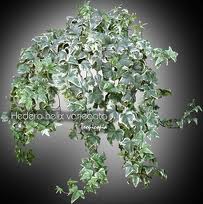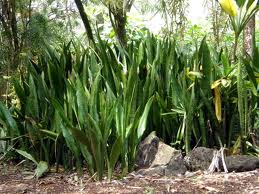AND HOUSEPLANTS
(By the way folks, THIS IS ROCKET SCIENCE that you can use!!!)
Over the years our space program has led the way to an important discovery about the role of houseplants indoors. The National Aeronautics and Space Administration (NASA), along with the Associated Landscape Contractors of America (ALCA), has been researching methods to cleanse the atmosphere in future space stations to keep them fit for human habitation. In doing this research, NASA has found that many common houseplants and blooming potted plants help fight pollution that occurs indoors.
 |
| Peace Lilllies $ Gerbera Daisies are effective air purifiers |
One study, conducted in the late 1980s, resulted in excellent news for homeowners and office workers everywhere. The study concluded that common houseplants such as
 |
| bamboo palms |
 |
| and spider plants |
 |
| Pollutant Removal In Progress |
Newer homes and buildings, designed for energy efficiency, are often tightly sealed to avoid energy loss from heating and air conditioning systems. Exacerbating the situation is the use of synthetic building materials found in modern construction are known to produce potential pollutants that remain trapped in these unventilated buildings—This results in what is known as Sick Building Syndrome, created by homes and other buildings so tightly constructed that pollutants cannot be released to the outside.
It's a well known fact that plants convert carbon dioxide into oxygen through photosynthesis
The NASA/ALCA study showed that many houseplants also remove harmful elements such as trichloroethylene, benzene, and formaldehyde from the air.
In the oppressive Texas summer heat when A/C units are working over-time (such the summer we just experienced)
and then, as the autumn season approaches, with the days becoming shorter and the nights a bit crisper, most of us begin to think of moving indoors and spending less time in the fresh air.
 Tropical plants, the plants we grow as houseplants, in their natural habitat, are adapted to tropical areas where they grow beneath dense tropical canopies and must survive in areas of low light.
Tropical plants, the plants we grow as houseplants, in their natural habitat, are adapted to tropical areas where they grow beneath dense tropical canopies and must survive in areas of low light. This makes them ultra-efficient at capturing light, which also means that they must be very efficient in processing the gasses necessary for photosynthesis. Because of this fact, they have greater potential to absorb other gases, including potentially harmful ones.
In the study NASA and ALCA tested primarily for three chemicals: Formaldehyde, Benzene, and Trichloroethylene. Formaldehyde is used in many building materials including particle board and foam insulations. Additionally, many cleaning products contain this chemical. Benzene is a common solvent found in oils and paints. Trichloroethylene is used in paints, adhesives, inks, and varnishes.
 |
| Pollutant Eaters |
Researchers have found many houseplants can absorb benzene, formaldehyde and many other air pollutants that are created as gases when we install man-made materials such as carpets, laminates, paints, wallpapers and fabrics in our homes.
While NASA found that some of the plants were better than others for absorbing these common pollutants, all of the plants had properties that were useful in improving overall indoor air quality.
While saving energy and money is important to all of us, we must remember that it is crucial to our indoor environment to have clean, fresh air in our homes. So, houseplants take on a larger role in our homes (and all interior environments for that matter) than merely providing beauty in the décor. They contribute to balancing internal humidity and cleansing the air we breathe.
If your home is old enough to be leaky and drafty, you may not need to worry about the many pollutants that can become trapped indoors with us.
But, if you live in a newer, and/or energy efficient home with windows and doors tightly sealed, or you work in a building where circulation is poor and the air is stale, these pollutants have less opportunity to move to the outside.
Studies by NASA have generated the recommendation that you use one 6-8” houseplant per every 100 square feet of living space. Think about it. This is probably more than you currently have in your home and it is time to add some.
Top Twelve Indoor Plants For Purifying The Air
Here’s NASA’s list of the TOP TWELVE houseplants that have been found to play an important role in removing air borne pollutants:
 |
| English Ivy (Hedera helix) |
 |
| Spider plant (Chlorophytum comosum) |
 |
| Peace Lily (Spathiphyllum) |
 |
| Pothos (Epipiremnum) |
 |
| Bamboo Palm (Chamaedorea sefritzii) |
 |
| Philodendron (Philodendron scandens) |
 |
| Dracaena (Dracaena marginata) |
 |
| Weeping Fig (Ficus benjamina) |
 |
| Janet Craig (Dracaena deremensis ‘Janet Craig’) |
 |
| Snake plant (Sansevieria trifasciata) |














No comments:
Post a Comment